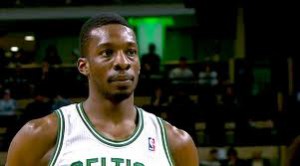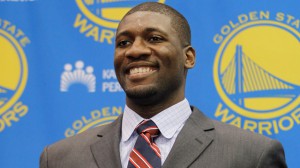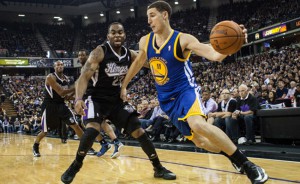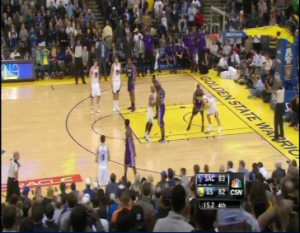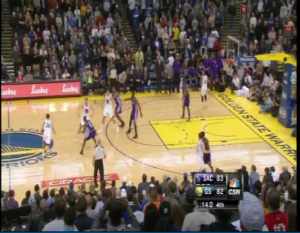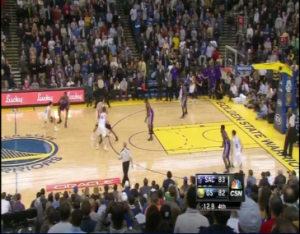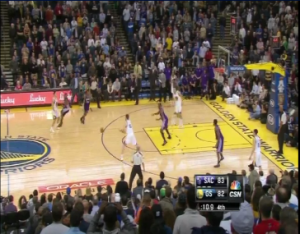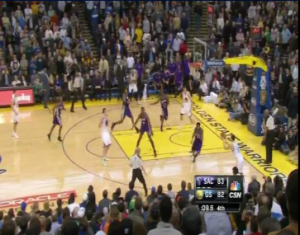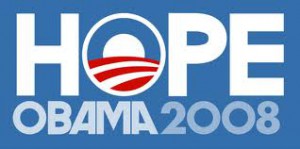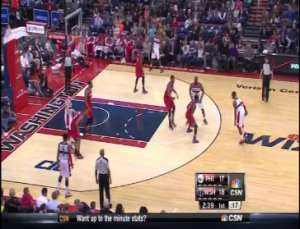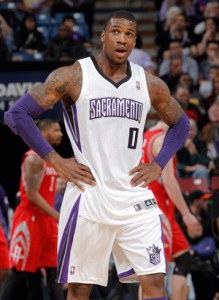Last summer, perpetual underachiever Jeff Green signed an immediately criticized 4 year 36 million dollar deal with the Boston Celtics. Green, a forward who couldn’t rebound and a scorer who couldn’t score had struggled to fulfill the potential the Celtics traded Kendrick Perkins for a year prior. Before Rondo’s injury, the Celtics were outscored by 2.6 points per 100 possessions with Green on the court. Green, splitting time at backup small forward and power forward, only rebounded 8.2% of available rebounds, a horrendous rate for either position, and shot a below average 50.8 true shooting percentage (accounts for free throws and increased value of 3’s). Green, the 5th pick in the 2007 draft, appeared mired in yet another underwhelming season. However, since Rondo’s injury, Green has quickly shifted from an underwhelming backup to one of the best scorers in the league. In 32 games since January 12th, Green has a 59.9 % true shooting percentage, and a net rating of 4.3 pp100p. Green, often criticized for not being aggressive, has done a much better job attacking the rim, and is finishing and drawing fouls at a much higher rate when he gets there. Prior to Rondo’s injury, Green made 54.1% of his shots attempted less than five feet from the basket. After the injury, he has finished 66.2% of those attempts. Green has been noticeably more controlled in his forays to the rim in recent months, knowing when to pass to cutters and kick to the perimeter and when to attack out of position defenders. Highlighted by his 44 point eruption in a dramatic loss to the Miami Heat, Jeff Green has been a very efficient scorer the Celtics since Rondo’s injury, and though 9 million dollars per year still seems excessive, especially given that the Celtics appeared not to be bidding against anyone, Green is developing from a contractual catastrophe to minor inconvenience.
Cavaliers’ Future: The Cleveland Cavaliers picked Syracuse guard Dion Waiters 4th overall in this year’s draft, a year after picking Canadian power forward Tristan Thompson in the same slot. The Cavaliers clearly struck gold with top pick Kyrie Irving, however were criticized for the Thompson and Waiters picks. His first season in the league, Thompson struggled to finish over NBA level defenders, had little skill away from the basket, and, though he was a very good rebounder, struggled defensively. A year later, when many expected them to select Harrison Barnes, the Cavaliers drafted Dion Waiters, an inefficient shooting guard who came off the bench in college but had athletic potential. Through the first few months of the season, Thompson appeared improved, but not sufficiently to justify his draft spot. Meanwhile, Waiters was struggling, basically manifesting every criticism of his game coming out of college. He was taking far too many midrange jumpers, many contested, and had a generally poor shot selection. In 8 games in December, Waiters shot an incredibly poor 38.8% true shooting percentage. However, since the early season struggles, both Waiters and Thompson have given Cleveland reason for renewed hope. After Anderson Varajao’s season ending injury, Thompson has exploded. His rebounding percentage rose from above average in the early season into the mid-20’s post-Varajao injury, and, with increased post up and pick and roll opportunities, he has increased his scoring production and efficiency. Once criticized as a potential bust, Thompson has pushed himself into contention for 2nd best player in the 2011 draft, and the Cavaliers already have the 1st. Waiters, meanwhile, has seemingly adapted to the NBA. As this fearthesword.com article outlines, Waiters has continued to get to the rim with ease, but is now finishing once he gets there. Though he has still struggled to convert on three’s Waiters may slowly be becoming the dynamic source of scoring and ball-handling relief for Kyrie Irving that the Cavs envisioned.
Warriors’ Playoff Matchups: Likely inspired by a couple impressive regular season wins by the Warriors over the Clippers, many are suggesting that the Warriors should hope to match up with Los Angeles in the first round. The Clippers have faltered recently, often looking closer to average than elite. However, it seems that a large part of what keeps the Clippers slightly below the level of the “elite” teams (though those who remember past the last two months would likely include the clippers) is the desire to limit Chris Paul and, oddly, Blake Griffin’s minutes during the regular season. With both Griffin and Paul on the court, the Clippers outscore opponents by 8 points per 100 possessions (nba.com). Though the Warriors guarded Blake Griffin decently in the regular season games, David Lee is not mobile enough to recover to Griffin after “downing” Paul-Griffin pick and rolls, the staple of the Clippers offense, and Steph Curry is not strong enough to effectively deny Paul the screen. The Warriors defense has fallen apart recently, and would likely collapse under the constant threat of the Clippers pick and roll and transition attacks. As a Warriors fan, I would prefer they play the Denver Nuggets to any other likely first round opponent. While the Nuggets are better than the Warriors, I believe the Warriors will at least be able to challenge the Nuggets if they can limit turnovers (which they probably can’t) and hope Andre Miller decides to blow a game or two.
Bynum Injury: Before the season, the Philadelphia 76ers traded Andre Iguodala, Nikola Vucevic, Moe Harkless, and a future first round pick for Laker’s center Andrew Bynum as part of a 4-team trade. Bynum had struggled with knee issues throughout his career, and was scheduled for surgery in the offseason. Unfortunately, Bynum suffered several setbacks throughout his recovery, and recently it was reported that Bynum needed another surgery, meaning he would miss the entire year. Bynum will not play for the Sixers this year, and may never, as he is an unrestricted free agent this offseason. As it became clear Bynum would not play this season, many criticized the Sixers for the trade, and though in hindsight the trade may end up as regrettable, it was the right move. Prior to the Bynum trade, the 76ers were a capped-out perennial 1st, maybe 2nd round exit whose only hope to advance farther in the playoffs was a drastic Evan Turner improvement (which did not come this season). The Bynum trade gave the Sixers the 2011-2012 2nd team all-NBA center that ranked 16th in win shares per 48 minutes (greater than 20 mpg), and the potential for an elite inside out combo with Jrue Holiday that could vault the Sixers into a higher level of contention. Though Turner has not improved much, trading Iguodala freed an offensive role for the young wing. The Sixers real failure this past offseason came in amnestying Elton Brand, the underrated defensive anchor, and using the freed cap space to sign Nick Young, Kwame Brown, and Dorell Wright.

